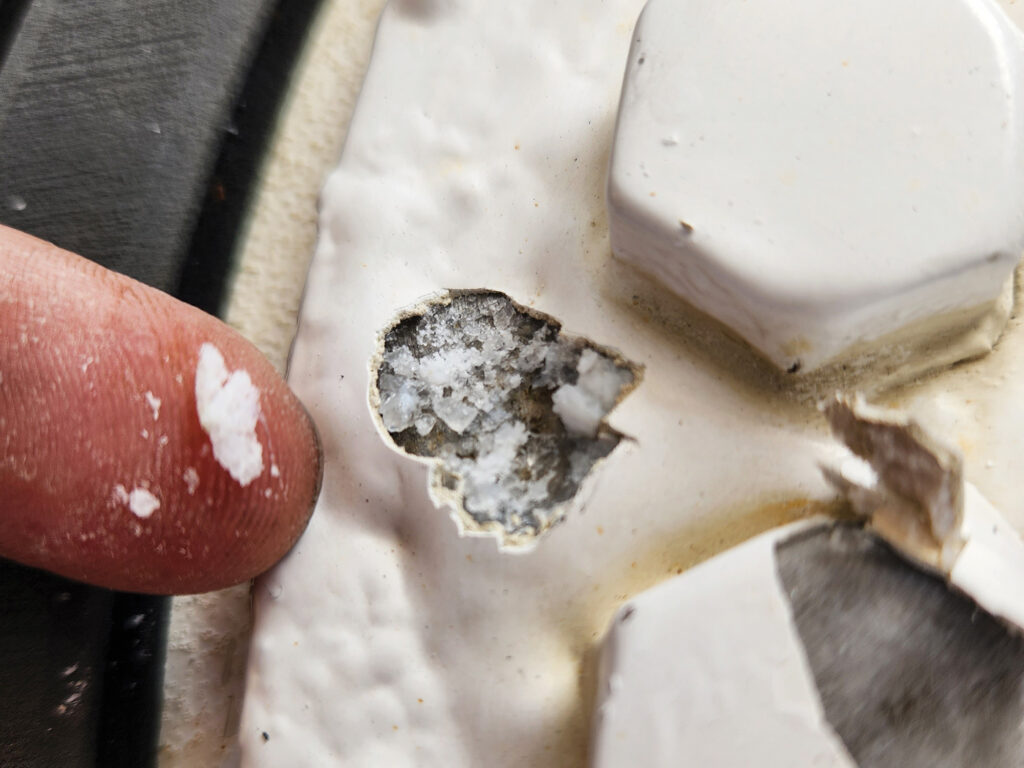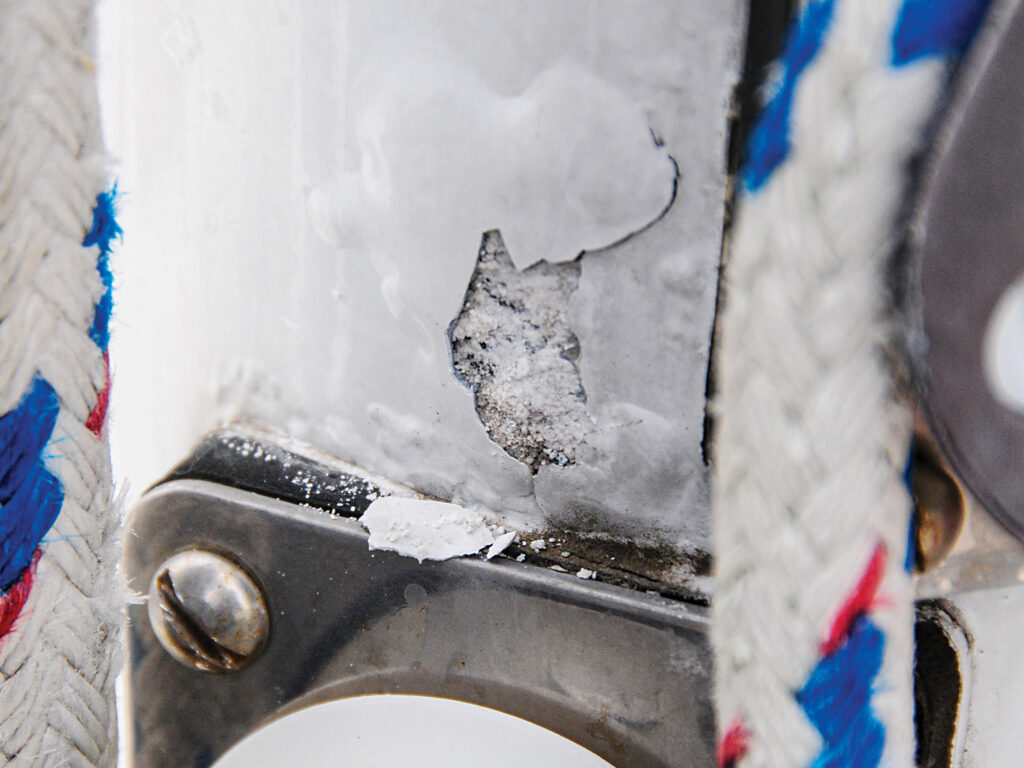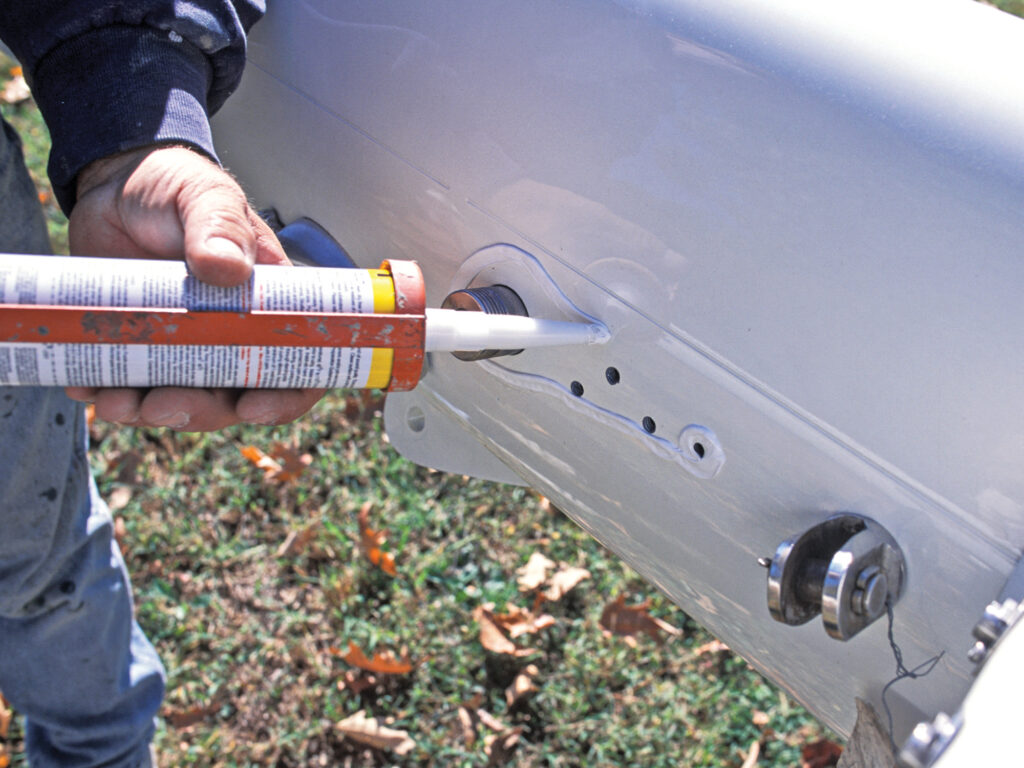
Your vessel’s spars undergo a constant torture test, almost from the day they are stepped. They are compressed and tensioned, exposed to cyclical loading, and battered by sunlight, salt spray, rain and potentially extreme temperature variations. It’s a wonder they hold up for as long as they do.
Most spars are made from aluminum alloy, typically 6061 series. Its strength-to-weight ratio, durability and corrosion resistance make it well-suited to the task. When exposed to the atmosphere, it immediately develops an invisible yet tough aluminum-oxide coating, which slows the corrosion process to a veritable crawl, provided a few criteria are achieved. Chief among these is near-continuous exposure to oxygen. Herein lies the problem for spars that are painted.
Aluminum is subject to a type of corrosion called poultice when it is exposed to water (typically, stagnant) that’s oxygen-depleted. When aluminum is painted, its surface no longer has access to oxygen. This prevents the formation of corrosion-preventive film.
However, because the paint also excludes water—a necessary element in the poultice corrosion process—the aluminum remains corrosion-free.
The challenge arises in maintaining a contiguous coating of paint. Wherever there is a breach, water can enter, setting in motion the poultice corrosion demon.
Because spars are filled with holes, fittings and fasteners, and are subject to chafe and the occasional impact, maintaining this contiguous coating can be challenging.
With nearly all painted spars, and with virtually all other painted aluminum deck components, poultice corrosion begins at hardware and fastener installations. By virtue of the installation itself, the paint coating is invariably fractured. Once water migrates beneath the paint, it interacts with the oxygen-deprived aluminum, generating an aluminum hydroxide blister. Beneath that blister, you will find a powdery (if the water has drained away) or gooey and whitish substance. Unchecked, it will cause the aluminum surface to waste away, leaving behind indentations or pits, ultimately compromising the integrity of the structure and leading to failure.

Poultice corrosion can be exacerbated if the paint breach is covered with a material that retains water. A classic location for this scenario is beneath spreader boots, where coatings are often fractured by standing rigging. The damage, even if to paint alone, can be costly to repair.
I’ve also learned that spar poultice corrosion is relatively easy to prevent. First, wherever possible, avoid damage to paint. When it does occur, touch it up as quickly as possible.
Because spars are filled with holes, fittings and fasteners, and are subject to chafe and the occasional impact, maintaining this contiguous coating can be challenging.
Second, make certain that every fastener and hardware flange that contacts the spar’s painted surface is thoroughly bedded in polyurethane or polysulfide bedding compound. While this does not prevent the paint breach, it does immediately fill it, preventing water from entering.
Note that compounds are available for use on the threads of stainless fasteners that are screwed into aluminum substrates. While those are valuable in preventing galvanic corrosion and fastener seizure, they do not address the paint breach issue specifically, and they are not suitable for bedding of flanged components such as padeyes, winches, steps and antenna bases.

Maintain coating integrity by bedding all hardware and fasteners, and you will keep your painted spars free of unsightly blisters while eliminating most poultice corrosion.
Steve D’Antonio offers services for boat owners through Steve D’Antonio Marine Consulting.








